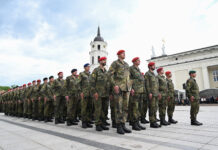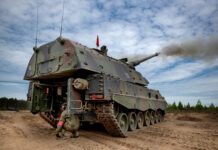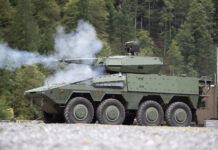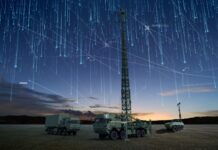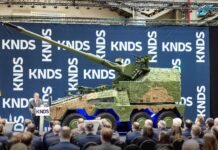The European continent is criss-crossed by a large number of waterways that make large-scale ground military manoeuvres difficult. This article examines the extent of the challenges that water obstacles present and why gap crossings are relevant in the case of the War in Ukraine. It discusses the risks inherent in performing a water-crossing operation and how the ‘Saber Guardian’ exercises are keeping NATO up to date with doctrine. Furthermore, it explores the UK’s recent efforts to improve its river-surveying capabilities and provides details of the phases of gap-crossing operations, the equipment used and how some armoured vehicles are able to conduct river fording.
From lakes and swamps, to small canals and streams up to larger and wider rivers – all known as ‘wet gaps’ – these obstacles present a significant challenge for military forces, especially when engaged in high-intensity warfare. Wide rivers, in particular those over 40 m wide, can significantly constrain ground forces’ space for manoeuvre and can easily become campaign-critical obstacles.
Speaking at the RUSI Waterways Conference in 2022, retired Finnish Army Major-General Pekka Toveri told delegates that a 1965 Soviet Army report highlighted the extent of the problem that water obstacles can present across Europe. This report stated that for every 5 km travelled, there would be a water obstacle at least 5 m wide that would need to be crossed. The further the distance a force is required to move, the higher the chance of encountering larger obstacles. For every 10 km travelled, a force would have to cross a waterway at least 10 m wide. Whilst the report estimated that 60% of water obstacles were less than 20 m wide, it also means that 40% are wider than this.
As such, for every 35 km travelled, there would be an obstacle at least 100 m wide and for every 100–150 km, an obstacle between 100–300 m wide would need to be crossed. At distances above this, it would be likely that obstacles could exceed 300 m wide. Most of these obstacles will have bridges and tunnels crossing them, or roads leading around them. However, during wartime conditions, many are likely to be destroyed or rendered uncrossable by defending forces. As such, the advancing force will be called upon to employ alternate means of crossing the gap.

Gap-crossing solutions in Ukraine
With terrain that includes so many water obstacles across the continent, the ability to cross water quickly while maintaining combat power and momentum is critical. If obstacles such as these cannot be crossed, the fighting ability of land forces diminishes greatly.
This indicates that any Army intending to conduct offensive operations with heavy armoured formations that include main battle tanks (MBTs), infantry fighting vehicles (IFVs) and armoured personnel carriers (APCs) will need bridging equipment to cross these types of obstacles. Furthermore, the doctrine and tactics, techniques and procedures (TTPs) must be developed and tested to ensure that river crossing can proceed safely.
The Russian Army found out to their horror the importance of the latter during the opening stages of the War in Ukraine in February 2022. Whilst it had significant stocks of bridging and barge equipment, it nonetheless found it difficult to conduct gap-crossing operations at scale and under fire. A particularly notable instance was the Russian Armed Forces’ attempted crossing of the Siverskyi Donets River in May 2022, which saw the force lose over 400 men and a number of vehicles, including tanks.
The current deadlock in Ukraine has both sides sitting behind long and deep defensive lines that will be difficult and costly to break down. The expected Ukrainian offensive of mid-2023 never made progress as it encountered well-protected and established defences. These defences often protect the land corridors between the major rivers in eastern Ukraine. Elsewhere, water obstacles – the Dnipro River in particular – form a natural barrier which is extremely difficult for either side to cross in force. It means that in Ukraine, a gap-crossing capability could be a game-changing capability.
US Army Captain Josh Wiley, Mobility Officer for US Army Europe and Africa’s Office of the Deputy Chief of Staff, Engineer (ODCSENG) told ESD: “Executed properly, a gap crossing also leverages a high tempo, audacity in the boldness of the plan (go where the enemy would not have prepared for you to cross) and concentration of combat power at the points of crossing and with a robust depth of fires, air defence, electronic warfare and other capabilities that will deter and degrade the enemy.”
A risky endeavour
Gap crossing is both difficult and risky to perform; it is therefore preferable to use other options, such as existing infrastructure or going around obstacles if possible. In the case of Ukraine, the strength of the defensive lines makes this very difficult, and so in many cases gap crossing is the only realistic option for an advancing force to bypass existing defences and have a chance of achieving success. However, Ukraine does not yet have the force levels or resources to mount a gap crossing in force.
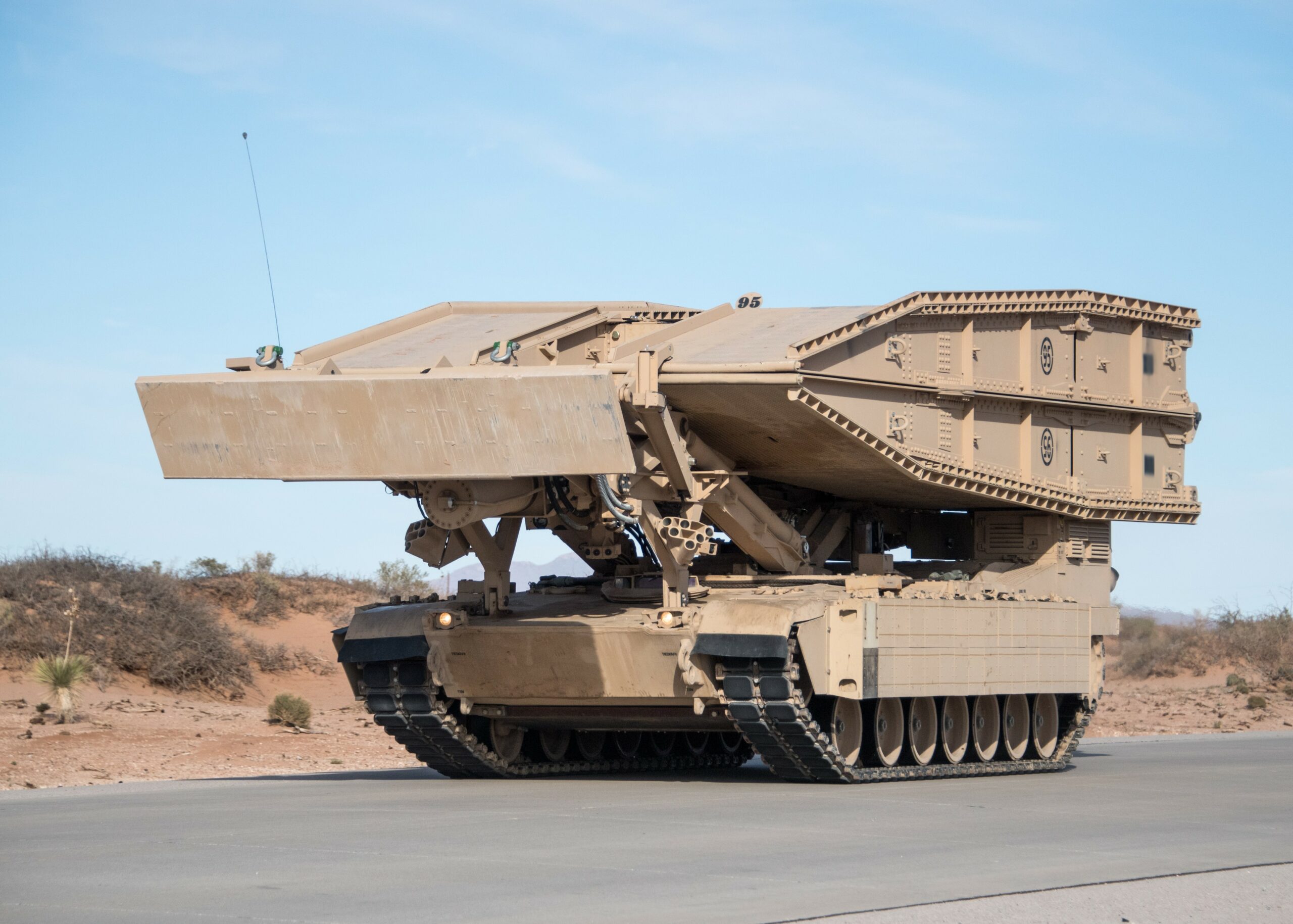
Credit: US Army
Wiley said that a wet gap crossing “is a Division-level operation involving all imaginable types of forces and is widely considered to be one of the most dangerous types of operations a manoeuvre force can execute”. When conducting a crossing, large formations, including heavy armour, are at their most vulnerable, especially to long-range artillery fires or air attack. This is because vehicles will be travelling at slower speeds and become concentrated in larger numbers as they wait to cross.
Wet gap crossing exercises are part of NATO’s annual exercise programme, highlighting its importance. Exercise Saber Guardian 23 ran from 29 May to 9 June 2023 with US and Romanian forces crossing the Danube River. Saber Guardian has been running for some time but is becoming more advanced. In 2017, the 59th Mobility Augmentation Company (now 59th Combat Engineer Company – Armoured, Fort Cavazos, TX) conducted the first assault-bridging crossing of a Romanian Piranha V IFV with a US M104 Wolverine. The Wolverine has since been replaced by the M1074 Joint Assault Bridge System (JABS) and Saber Guardian has evolved into a more complex exercise with Wiley stating that it includes realistic scenarios “that challenges bridging units to practice and perfect the art of river crossing at a grand scale”.
This latest iteration involved a series of crossing operations that employed small boats and floating pontoon barges strung together that allowed vehicles from nine NATO countries including Bulgaria, France, Italy, The Netherlands, North Macedonia, Poland and Portugal to cross. It is also about developing the TTPs for the whole force; in this regard, Exercise Saber Guardian allowed engineers from NATO countries to learn and develop their methods in a multinational environment.
The value of reconnaissance
The first step in a gap crossing usually requires the identification, well in advance, of the most suitable area to cross a waterway. This work is performed as part of the overall reconnaissance effort. In the US Army, engineers contribute a staff running estimate that integrates engineer reconnaissance, which forms part of the support for a commander’s decision-making process.
“Identifying information requirements to answer starts with the manoeuvre force understanding its responsibilities within an overall scheme of manoeuvre, analysing the terrain and the mobility corridors throughout the area of operations and then defining the number and size of the gaps (i.e., rivers, lakes, drop-offs, and other discontinuities to land manoeuvre) in the area of operations,” Wiley said.
He explained that enemy force dispositions will be examined by Engineer Reconnaissance Teams (ERTs) along with existing obstacles to assess strengths and weaknesses and the potential for counterattack and close-air support. Other areas of focus will include soil conditions, hydrology, vegetation, seasonal weather conditions, entry and exit banks and gap length and profile. This analysis will be combined with that from other experts, including geospatial analysts, professional engineers, operations officers and data from allied countries.
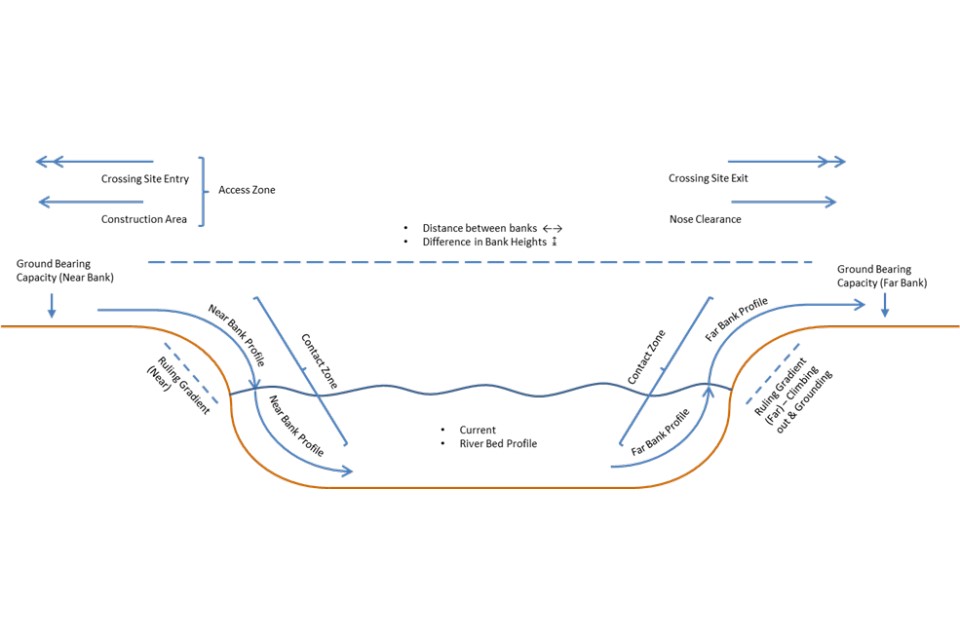
Credit: Crown Copyright 2021
The UK Ministry of Defence recently completed its ‘Map the Gap’ project, aimed at decreasing the time taken to survey a potential crossing point, so that more sites can be surveyed overall and give a variety of crossing options to commanders much sooner. This would allow them to increase manoeuvre options and sustain a higher tempo of operations. This is especially relevant for wide wet gaps more than 40 m wide, which can be critical obstacles.
The current method of reconnaissance for a water crossing is laborious. British Army Royal Engineer reconnaissance troops have to survey both banks of the river to generate a gap profile and obtain key characteristics using manually-operated equipment. Divers are also used to survey the underwater environment and riverbed profile. Operating forward also exposes them to danger and risks an enemy identifying the crossing point.
The first phase of ‘Map the Gap’ was completed in March 2021, and saw five industry suppliers demonstrate a range of existing sensor solutions integrated on platforms, which were tested across a representative gap. The goal was to improve the ability of the British Army’s Royal Engineer reconnaissance units to conduct wet gap surveying using more electronic sensors and autonomous platforms.
The second phase, worth GBP 2 million, was completed in March 2022. During this latter experiment, three industry suppliers – DCE, Ultrabeam and ISS Group – demonstrated semi-autonomous solutions. The solutions had to prove they could be deployed within a military environment in a low-bandwidth, GPS denied environment and achieve Technology Readiness Level 6 to allow potential development into an in-service capability.
The competitors’ solutions were required to measure the riverbank ground bearing capacity, bank height, bank tolerances, water flow, and a river bed profile to a minimum depth of 3 m and 16 m wide. They had to support the identification of crossing sites with entry and exit routes for ground traffic, factoring in trees and foliage, as well as the size of construction areas. Overall, the Army needed to be able to cross a 200 m wide gap and reach an objective 100 km beyond.
A UK MoD spokesperson told ESD that ‘Map the Gap’ was “an extremely useful activity” to understand the applicability and TRLs of different sensors and effectors for military engineers. “The experiment has been closed and the lessons summarised,” the spokesperson added, but it is not clear if this work has been taken forwards with equipment procured for British Army or NATO survey capability.
Phases of effort
“At its heart, the objective of friendly forces in a crossing is to project combat power to the exit (far) bank of a river or other type of water obstacle at a faster rate than the enemy can concentrate forces for a counterattack,” Wiley said.
He also noted that a crossing consists of five active phases:
- Advance to the river;
- Assault across the river;
- Advance to the far side;
- Secure the bridgehead line;
- Continue the attack.
Under US Army doctrine, each of these phases includes a series of complex and highly synchronised operations to isolate the crossing from enemy influence whilst also building capability, using engineering equipment and moving combat power from multiple sites – also using decoys – that will prevent the enemy from massing forces whilst boats are in the water and the crossing is contested. For example, securing the riverbanks requires combined arms operations and long-range fires to destroy any opposing forces.
It is critical that each phase is completed successfully before the next can begin. In the aforementioned May 2022 Russian attempt to cross the Siverskyi Donets River in May 2022, much of the failure can be put down to Russia’s insufficient reconnaissance of the enemy capabilities in the area of the crossing, and their failure to sufficiently degrade or defeat the opposing force’s artillery before crossing, as well as insufficient protection against enemy low-flying air support and enemy reconnaissance UAVs.
During Exercise Saber Guardian 23, helicopter and infantry units were used to provide covering fire and the Romanian Smardan River fleet of armoured patrol boats were used to provide suppressing fire on the opposing side of the wet gap. This prepared the crossing so that 11 US Army M2A3 Bradley fighting vehicles (each weighing 30–33 tonnes), Italian B1 Centauro fire support vehicles (FSVs), Polish KTO Rosomak IFVs, French PVP protected patrol vehicles (PPVs), as well as Romanian Piranha III APCs and Piranha V IFVs, were able to cross a 700 m long Romanian pontoon bridge, which was able to sustain 60 tonne loads. US rafts were also used to facilitate crossing by many of the aforementioned vehicles, whilst Bulgarian ferry vessels moved vehicles from North Macedonia. Over the course of several days, other wet gap crossings were performed to cross water obstacles up to 1 km wide and helped to prove the US ability to rapidly reinforce Europe and perform complex military tasks with allies.
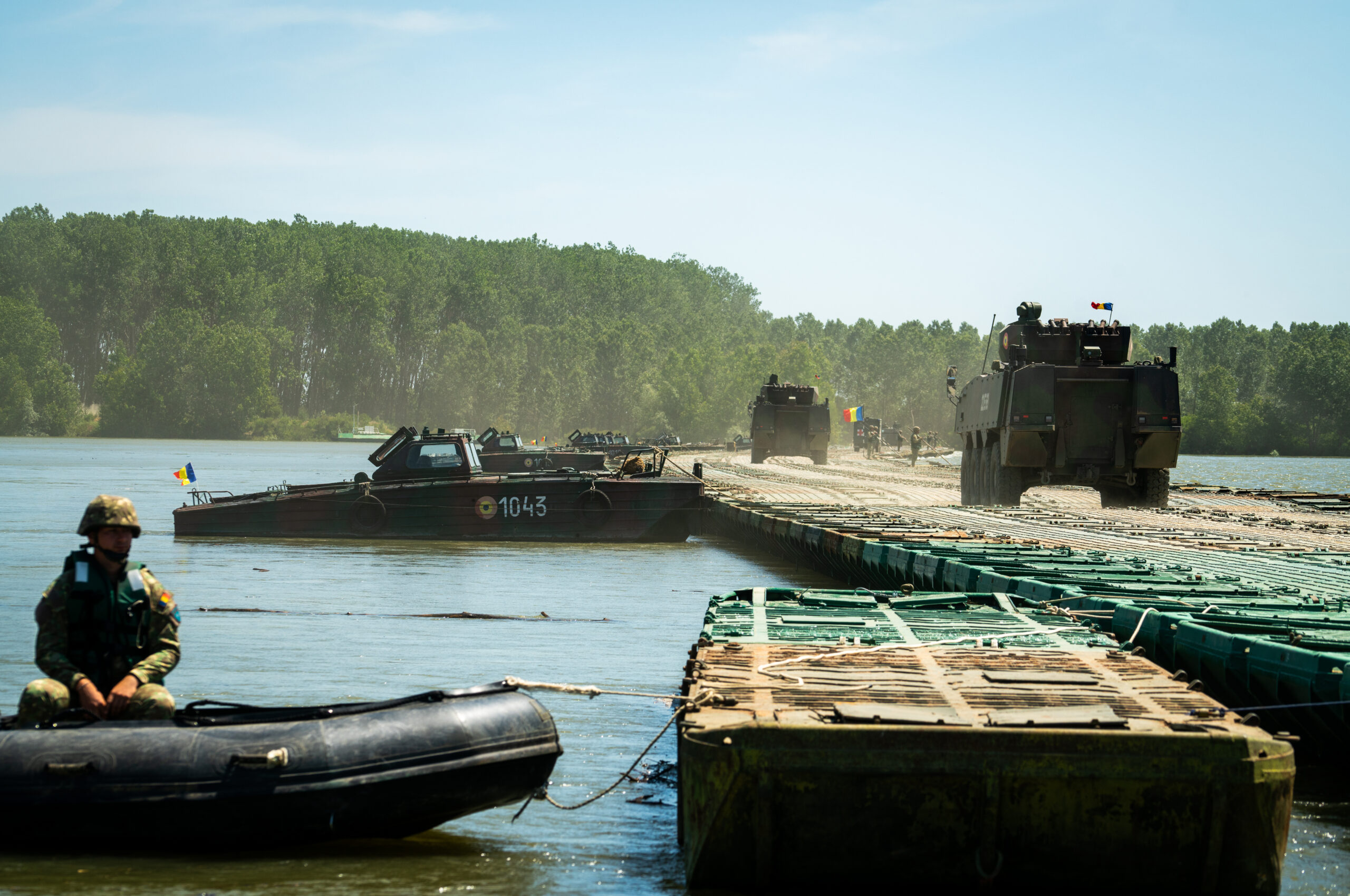
Credit: US Army/Cpt Avery Smith
Captain Wiley said that, “Saber Guardian 23 demonstrated the ability of allied forces to quickly secure a far side, emplace bridging and project combat power across it as a combined-arms and joint effort more rapidly and smoothly than before,” adding that, “Much of the refinement in TTPs in an exercise from this comes from the lowest level, as non-commissioned officers and soldiers find ways to better compliment different systems and officers lead after-action reviews to refine best practices for a combined force.”
Equipment solutions
Looking ahead, Wiley stated that some future technology “may enable our forces to cross rivers with zero or minimal risk to soldiers on the ground, to protect our greatest assets. Others involve upgrading the load bearing capacity of our bridging, which will allow even the heaviest armour in our inventories to cross at any time and place of our choosing”.
Meanwhile, Wiley explained that NATO was not just considering crossing needs during an active conflict, but also before and after, which required a greater partnership with industry-developed lines of communications for bridging.
Existing bridging assets in the US Army include the Multi-Role Bridging Company (MRBC), which uses the Improved Ribbon Bridge (IRB) floating bridge and Dry Support Bridge (DSB) for larger water obstacles. This can be interoperable with the M3 amphibious bridging vehicle used by the British and German armies, which both countries provide to NATO under the Wide Wet Gap Crossing (WWGC) capability, along with an increasing number of other European armies. The US Army also uses armoured vehicle-launched bridge (AVLB) vehicles, including the M1074 Joint Assault Bridge (JAB) and M104 Wolverine for crossing narrow gaps such as streams, which are much more numerous across Europe compared to wide rivers. The US Army also maintains a stock of panel bridging to help restore roads.
Organic vehicle capability
There are some armoured vehicles that have a swim capability enabling them to cross water obstacles. Some IFVs and APCs are amphibious without preparation, while others can be modified and prepared for gap crossing using propellers and buoyancy equipment. This can allow units to secure territory on the other side of the obstacle for a bridge or barges to land on. The presence of heavy armoured vehicles adds an extra level of security on the ground, as they are protected platforms with direct-fire weapons, adding further capability to that provided by aviation, infantry and long-range fires.

Credit: Bundeswehr/Detmar Modes
Tanks also have a fording capability that allows them to cross shallow rivers. KNDS, which manufactures the Leopard 2 MBT, has stated that it can conduct fording of rivers 1.2 m deep and a deep fording of up to 2.25 m deep. It also has a submerged mobility capability of rivers and lakes up to 4 m in depth using a snorkel which is set up on top of the turret prior to entering the water.
The standard fording in a Leopard 2 MBT requires the operator to activate the diving hydraulics for the tank to move through the water. This does not require any additional equipment or much time in preparation. For deep fording operations, as well as the diving hydraulics, a deep fording snorkel (essentially a large collapsible cylinder) is attached to the commander’s hatch. This device is used to provide air for the crew, engine and cooling systems. It is wide enough for the commander to stand inside, allowing them pop out of the top to see where the tank is going. The device’s height also serves to prevent water ingress by remaining sufficiently far above the surface of the water obstacle. Setting up the deep fording snorkel can take up to several minutes, including checks to ensure that the remaining hatches are properly sealed.
For submerged transit, the tank is completely underwater and only the snorkel is visible. Tank snorkels are transported by logistics units and are unpacked and attached to the commander’s hatch. Ropes are also prepared to make it easier to recover the tank should it become stuck on the riverbed. Tank crews are also trained to use rebreather systems in case of accidental flooding of the internal compartments, and to escape through the commander’s hatch and up the snorkel. During its transit under the river, the tank moves fairly silently, the engine noise muffled by the water.

Credit: Bundeswehr/Detmar Modes
However, deep fording is only possible in small rivers and water obstacles up to 4 m deep. Whilst this is useful for crossing smaller rivers and streams quickly, and can allow a heavy armoured unit to continue its progress, larger obstacles will require bridging systems, barges and other wet gap crossing equipment.
Closing thoughts
Gap crossing is a complex and time-consuming military operation that is inherently dangerous. However, when existing infrastructure is damaged or unusable, or land bridges between water features are defended – as seen in Ukraine – then gap crossing becomes the only way that manoeuvres can be sustained, or momentum created when a deadlock exists.
Exercises, training and developing modern equipment to support wet gap crossing operations are needed to ensure that this capability is maintained. However, whilst NATO supports some river crossing capabilities, it falls far short of what is needed for large-scale offensive operations.
Tim Fish



